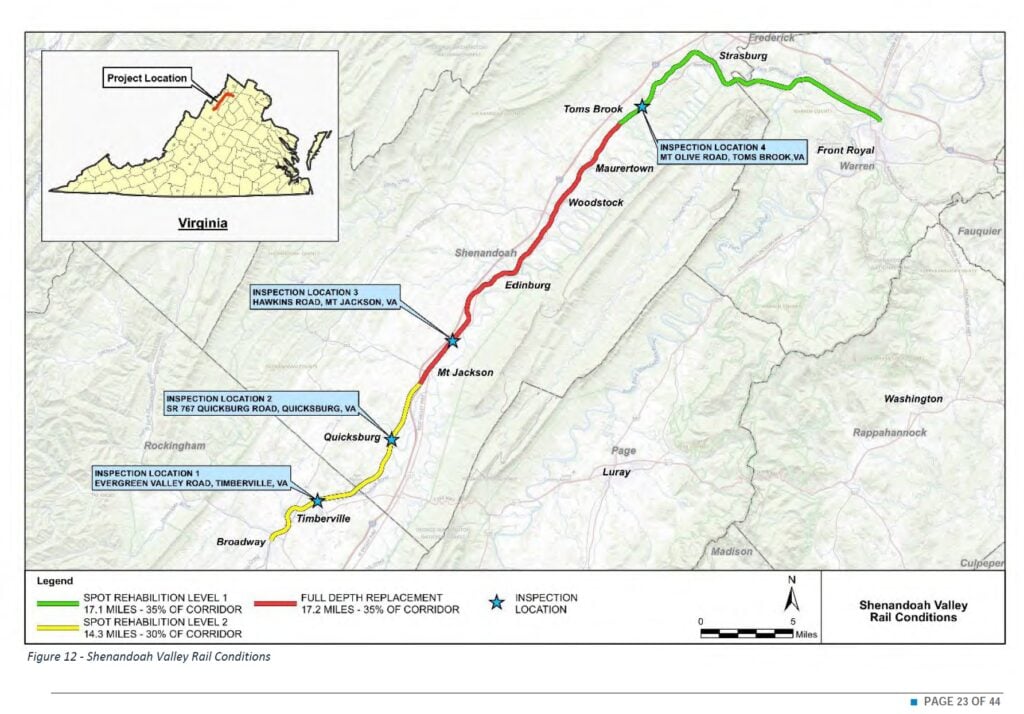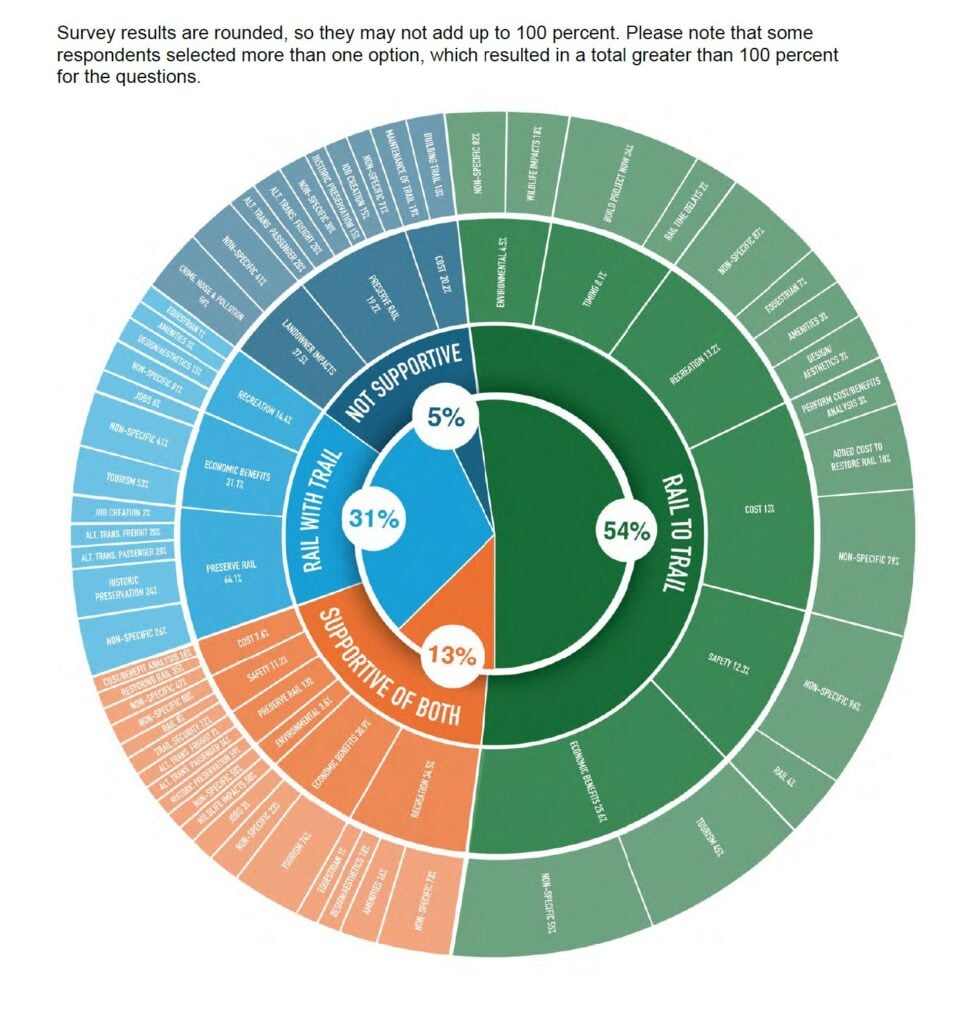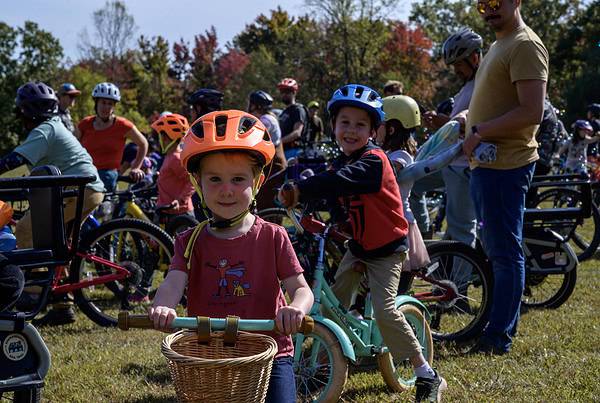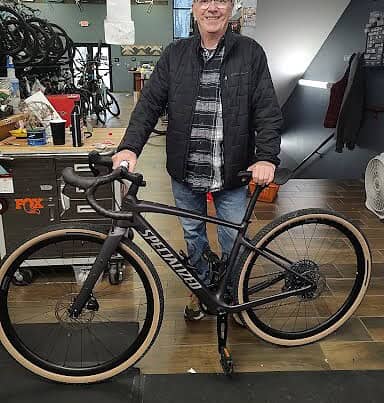
Historic
Since its inception, we’ve been proud members of the Shenandoah Rail Trail Partnership, working to turn an unused rail line into a vibrant multi-use trail for our communities.
In this post, we’ll explore the history of this unique project, why it has garnered such broad support, where things stand today, and how you can help keep up the momentum.
Historic Railroad to Community Trail: The Shenandoah Rail Trail
What is the Shenandoah Rail Trail Partnership?
The Shenandoah Rail Trail Partnership is a collection of local towns, counties, and nonprofits united by a vision: converting a 49-mile defunct rail corridor from Broadway to Front Royal, Virginia, into a multi-use trail. Formed a few years ago, this 18-member partnership includes every locality along the route – a testament to the widespread support for the project. The proposed trail would follow the path of the old Manassas Gap railroad line, which has already passed a state-mandated feasibility study showing the trail is viable.
“The Shenandoah Valley is a really amazing place … but one thing we’re really lacking is accessible opportunities for people to bike and walk and recreate away from cars in separate spaces,” says Kyle Lawrence, Executive Director of the Shenandoah Valley Bicycle Coalition. “Rail trails provide an amazing space … where people can be safe and comfortable and away from traffic.”
In short, the partnership’s goal is to create a safe, scenic corridor for walking, biking, running, and rolling that connects our communities—and the idea has broad support locally.
Why Convert a Railroad into a Trail?
Why turn an old railroad into a trail? Rail corridors offer unique benefits that make them ideal for recreation and transportation. For starters, the right-of-way is already there and graded at a gentle slope, something almost impossible to recreate today if we lost it.
In our hilly Shenandoah Valley, that smooth grade is a game-changer, making the trail friendly for casual cyclists, families, seniors, and others who might find steep hills challenging.
Another significant benefit is that this rail line runs directly through nine towns in three counties as it winds down the Valley toward Front Royal. In many of these towns, the trail would pass right through the heart of downtown, bringing foot traffic to local shops and restaurants. Trails like this are proven engines for local economies – especially in small towns – by boosting tourism and spawning new businesses catering to trail users.
Lastly, the route itself would be stunning. The trail corridor features multiple scenic crossings of the North Fork of the Shenandoah River and sweeping views of the Valley and Massanutten Mountain. We believe it could be “one of the most scenic [trails] in the state” – and anyone who’s seen the old railway bridges over the North Fork can imagine why.
A Historic Railway Reimagined
The line began as the Manassas Gap Railroad, chartered in 1850 to serve the northern Shenandoah Valley. During the Civil War, this rail line played a remarkable role. In fact, in 1861, Confederate General Joseph Johnston used it to rush troops to the Battle of Manassas, marking the first time in history a railroad was used to move armies. Passenger trains stopped running in 1948, and freight service finally ended in 2020. Today, the tracks are rusting and overgrown, but the corridor remains intact.
Converting it to a trail is a way to preserve and celebrate that history. Instead of losing the rail line to decay or piecemeal development, we can bring it back into service as an uninterrupted linear park for people walking, pushing strollers, rolling and biking, while protecting the physical remnants of the 175-year-old railroad’s story. The trail will be both a recreational-transportation amenity and a living history experience.
Strong Community Support and Recent Progress
Local governments have passed formal resolutions endorsing the trail all along the proposed route. Every town and county on the corridor supports the project, alongside regional planning commissions, tourism boards, businesses, health organizations, and nonprofits. This broad base of support led to the creation of the nonprofit Friends of the Shenandoah Rail Trail, which coordinates advocacy and fundraising.
In 2023, the Virginia General Assembly included up to $35 million specifically for the Shenandoah Rail Trail project in the state budget. Those funds are earmarked for acquiring the corridor, initial planning, and site preparations. In other words, the state has put real money on the table to move this from idea to reality.
What About Rail-With-Trail?
Recently, some groups suggested restoring trains and building a trail beside them. The Virginia Department of Transportation is still in the process of studying this idea, and the Phase 2 (of 3 total phases) report released in 2025 made it clear that rail-with-trail may be physically possible but isn’t practical. Here’s why:
- The rail line is crumbling. To safely carry trains, over a third of the tracks would need to be completely rebuilt.
- Bridges are a deal-breaker: Instead of reusing the 23 existing bridges, the study says every single one would require costly new pedestrian bridges or big detours.
- The corridor isn’t wide enough: In many places, extra land would have to be purchased just to fit stormwater systems and keep people safe.
Meanwhile, the public has already spoken. In Phase 1 of the study, a majority of survey responses supported rail-to-trail conversion, and nearly everyone agreed they want a trail in some form.

What’s Next, and How You Can Help
The Shenandoah Rail Trail is a once-in-a-lifetime opportunity to turn a historic rail line into a 49-mile community asset. It’s the single most important project for biking and walking in the Valley, and as a Coalition, we would drop everything else to make it happen.
Public surveys and in-person community meetings are on the horizon – so stay tuned. In the meantime, you can help simply by spreading the word. Share this update with your friends, neighbors, and coworkers. The more people who understand the opportunity, the stronger we’ll be when it’s time to speak up.
Together, we can transform the Shenandoah Rail Trail from vision to reality – a trail that connects our towns, celebrates our history, boosts our economy, and creates safe places to walk and bike for generations to come.
Join the Coalition as a Recurring Donor to support projects like the Shenandoah Rail Trail





